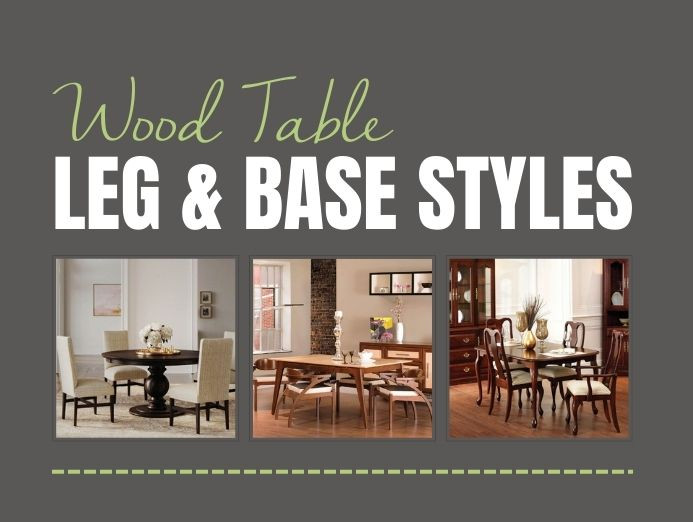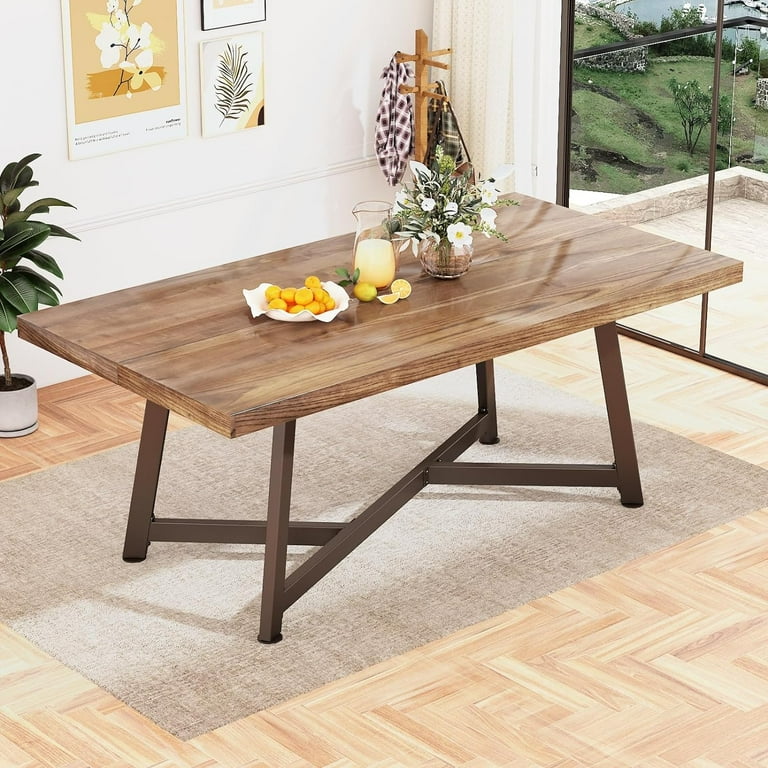How to Choose the Perfect Dining Room Table Legs for Your Home
How to Choose the Perfect Dining Room Table Legs for Your Home
Blog Article
From Typical to Modern: Find the Suitable Dining-room Table Legs for Your Design
The choice of dining-room table legs plays a critical function in specifying the general personality of your space, linking the space in between conventional craftsmanship and contemporary aesthetic appeals. While classic layouts such as cabriole and turned legs stimulate a sense of ageless sophistication, modern styles like hairpin and geometric alternatives provide an opportunity for striking aesthetic interest. Examining the best equilibrium between these designs needs a nuanced understanding of your existing decor and personal preference. As you take into consideration these components, the concern continues to be: how can you effortlessly integrate these diverse leg styles to develop a harmonious dining experience?
Comprehending Table Leg Styles
The range of dining-room table leg designs can significantly influence both the appearances and functionality of the space. Each leg style adds special functional attributes and visual aspects, satisfying diverse style preferences and usage needs. Understanding these styles is vital for choosing the best dining table that aligns with your total indoor style vision.
As an example, tapered legs offer a tidy, traditional look that can enhance an area's sophistication, while pedestal bases provide stability and make best use of legroom, making them excellent for smaller sized spaces. Barrette legs, a trademark of mid-century contemporary layout, present an industrial panache, permitting an airy, open feeling. Trestle legs evoke rustic charm, providing durable assistance and a sense of eternity.
Wooden legs can bring warmth and structure, whereas steel options commonly convey a smooth, modern ambiance. Ultimately, comprehending table leg designs is important for producing a natural eating area that shows individual design while making certain functionality and convenience.
Traditional Table Leg Options
When picking dining-room table legs, typical options typically personify timeless beauty and craftsmanship. These styles mirror an abundant heritage and a commitment to quality, making them excellent for those who appreciate classic appearances.
Among one of the most iconic traditional leg styles is the cabriole leg, characterized by its graceful curved shape. This design frequently features decorative carvings and is most typically discovered in Queen Anne and Chippendale furniture. One more popular option is the turned leg, which boasts a series of smooth, rounded forms that provide a classic look while preserving stability.
Moreover, the straight leg, while basic, offers a tough and basic structure that can mix seamlessly with a selection of tabletop designs. For those drawn to ornate detailing, claw-and-ball feet legs stimulate a feeling of magnificence and can serve as a sensational prime focus in any eating area.
Finally, pedestal bases, although not purely legs, offer an alternative traditional alternative that enables sufficient legroom and can be wonderfully sculpted. Each of these standard leg styles contributes to the total setting of a dining area, weding function with visual appeal.

Modern Table Leg Styles
Modern table leg designs use a diverse series of styles that stress cutting-edge materials and tidy lines. These designs frequently focus on capability while working as striking focal factors within a dining area. Minimalist looks prevail, with legs crafted from products such as steel, glass, and engineered timber, which add to a airy and modern feeling.
One popular style is the barrette leg, characterized by its slim, conical structure that supplies stability without frustrating the tabletop (dining room table legs). This design is typically found in mid-century contemporary furniture and can effortlessly enhance different table forms. Another trend is making use of geometric shapes, where legs may take on unbalanced or angular forms, adding wikipedia reference visual passion and a touch of artistry

Blending Designs for Special Areas
Typically, house owners seek to produce unique eating rooms that mirror their individual style by blending numerous layout components. This technique enables the unification of varied visual appeals, leading to an unified yet unique atmosphere. For click now example, matching a rustic wooden table with sleek, modern-day metal legs can create a captivating comparison that elevates the room's general allure.
Additionally, incorporating vintage table legs with modern table tops can evoke a feeling of history while preserving a contemporary sensibility. Such mixes not just showcase private taste yet additionally urge imagination, enabling property owners to curate a room that feels both individual and inviting.
Shade plays a vital role in this mixing procedure; choosing table legs that enhance or contrast with the existing color pattern can improve aesthetic interest. Whitewashed legs can soften the daring of a dark table surface, producing a well balanced visual.
Tips for Selecting the Right Legs
Picking the right table legs is vital for attaining both functionality and visual allure in your dining room. Begin by thinking about the total style of your area. Conventional setups gain from legs that feature intricate carvings or transformed layouts, while contemporary areas may call for smooth, minimal styles.
Next, examine the elevation and stability of the legs. dining room table legs. Typical table range between 28 to 30 inches in elevation, so ensure the legs complement this measurement for comfort. Furthermore, durable products, such as wood or steel, can enhance stability and longevity
Assess the leg form also-- options consist of directly, tapered, or stand styles. Straight legs offer a classic look, while tapered legs can add a touch of beauty. Pedestal bases offer adequate legroom and are ideal for smaller spaces.
Conclusion
In recap, picking the ideal dining area table legs calls for mindful factor to consider of both typical and modern-day styles. Conventional options such helpful site as cabriole and turned legs provide timeless elegance, while modern layouts like barrette and geometric forms offer a contemporary touch. By balancing leg style, height, and material with the general decoration, a cohesive and inviting atmosphere can be attained. Ultimately, the picked table legs must show the desired visual, improving the dining experience within the room.
The variety of eating space table leg styles can dramatically affect both the aesthetics and capability of the area. Ultimately, understanding table leg designs is necessary for creating a natural dining location that reflects personal style while guaranteeing practicality and convenience.One of the most renowned traditional leg styles is the cabriole leg, defined by its stylish bent shape. Straight legs use a traditional look, while conical legs can include a touch of beauty.In summary, picking the suitable dining space table legs calls for careful consideration of both typical and modern designs.
Report this page